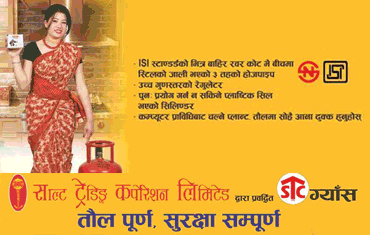Maoist insurgency on the wane? Situation in Chhattisgarh suggests otherwise
 Chhattisgarh, India: Even as Home Minister Rajnath Singh recently suggested that the Maoist insurgency is on its last legs, the ground situation in Chhattisgarh seems to belie that claim.
Chhattisgarh, India: Even as Home Minister Rajnath Singh recently suggested that the Maoist insurgency is on its last legs, the ground situation in Chhattisgarh seems to belie that claim.The data also reveal greater success in elimination of Maoist cadre (510 versus 445) and a significantly higher number of surrenders (3,373 compared to 1,387).
But despite these claims, the Maoist insurgency in Chhattisgarh seems to show no signs of waning. The state saw the highest number of casualties in 2017 in the context of the last six years. According to figures available with the Home Ministry, 109 people died in Chhattisgarh due to Maoist violence in 2012, 111 in 2013, 112 in 2014, 101 in 2015 and 107 in 2016. But in 2017, the number climbed to 130, which is the highest in the last six years.
Government data also show that security forces were majorly affected in 2017 in Chhattisgarh. In 2015, 48 security personnel were killed in Maoist violence. That figure came down to 38 in 2016. But in 2017, 60 security personnel lost their lives to Maoist insurgency. Special Director General of Police (Anti-Naxal Operations) DM Awasthi attributed the rise in casualties to two major Maoist attacks last year, resulting in the death of 37 CRPF personnel.
Skewed budget allocation?
Earlier this year, the central government removed 44 districts from its list of 126 Maoist-affected districts but this does not include any district in the Bastar division. Moreover, Chief Minister Raman Singh’s home district of Kabirdham finds itself among the eight new districts included in the Centre’s list of Maoist-affected areas.
Speaking to journalists last month, Raman Singh said his government hopes to put an end to red terror in the state within the next four years. “The Chhattisgarh government is working actively with the Centre to end of Naxal violence by 2022. We are committed to this. The government is working hard to restore law and order and protect public life. It is also taking steps to improve the socio-economic well-being of the people in the Naxal affected areas,” he said.
The government claims that compared with the UPA, expenditure on anti-Maoist activities has also increased. Between 2010 and 2014, Rs875 crore was spent under this head, while from 2014-18, the figure rose to Rs1,121 crore. But observers are surprised that the Centre has allocated the highest amount to Uttar Pradesh though none of its districts are on the list of worst-affected Naxal areas. In fact, there has been no incident of Maoist violence in Uttar Pradesh in the last four years as per the Union Home Ministry’s own data.
Statistics from 2014-18 reveal that while Rs349.21 crore was allocated to Uttar Pradesh for anti-Maoist operations, Chhattisgarh received just Rs53.71 crore under this head. In fact, Chhattisgarh was allocated the lowest amount in 2017-18 for modernisation of the police force among all the Naxal-affected states. While Uttar Pradesh received Rs77.16 crore in 2017-18, only Rs11.87 crore was granted to Chhattisgarh.
Chief Minister Raman Singh claimed that there is no problem with the budget. “In the last four years, we have seen a thorough change in the Naxal movement. The campaign, which is being run with the coordination of the security forces of the state and the Centre, has resulted in the gradual disintegration of the Naxalites. However, this is a long battle, which needs to be fought with great care and caution,” he said. He exuded confidence that Maoists in Bastar would meet the same fate as their counterparts in northern Chhattisgarh, from where they have been wiped out.
‘Maoists ready for a long and hard battle’
Revolutionary poet and activist Varavara Rao says he has been hearing claims about ending Maoist insurgency for the last 50 years but the movement has only gathered steam. He says the movement, which once covered only a small geographical area, has gradually spread to other parts of the country. It has managed to survive despite all attempts by the government to suppress the insurgents.
“From the time of the East India Company, tribals are fighting for their water, forest and land. The Maoists are helping the movement. The Chhattisgarh government is killing tribals in order to expand capitalism in the same way that the original inhabitants of America and Australia were wiped out to expand imperialism. But if you read history, you will see that the tribals never give up. From Gundadhur to Veeranarayan Singh, there is a long tradition of fighting,” says Rao.
Senior journalist and an expert on Maoist affairs, Ruchir Garg, says that whenever the police have had some successes against the Maoists, the government has been quick to claim that their fall is imminent. But such claims ring hollow when Maoists follow up their reverses with a big attack. For example, in March this year the Maoists killed nine soldiers in an IED blast in Sukma while seven soldiers were killed in another blast in May in Dantewada. The latter incident coincided with the visit of Union Home Minister Rajnath Singh to Chhattisgarh reinforcing the notion that the Maoists retained the capacity to strike at will.
Garg says the pressure on Maoists has increased in Chhattisgarh due to the aggressive approach of the security forces. But it does not seem like the military capabilities of the Maoists have been affected or their organisational structure shattered. “Those who know the guerrilla ways of Maoists, know that they are prepared for a long and hard battle. After suffering reverses, they go back, plan, and attack the security forces with even greater vengeance,” says Garg.
(Vandana Agrawal is a Raipur-based freelance writer and a member of 101Reporters.com, a pan-India network of grassroots reporters.)











